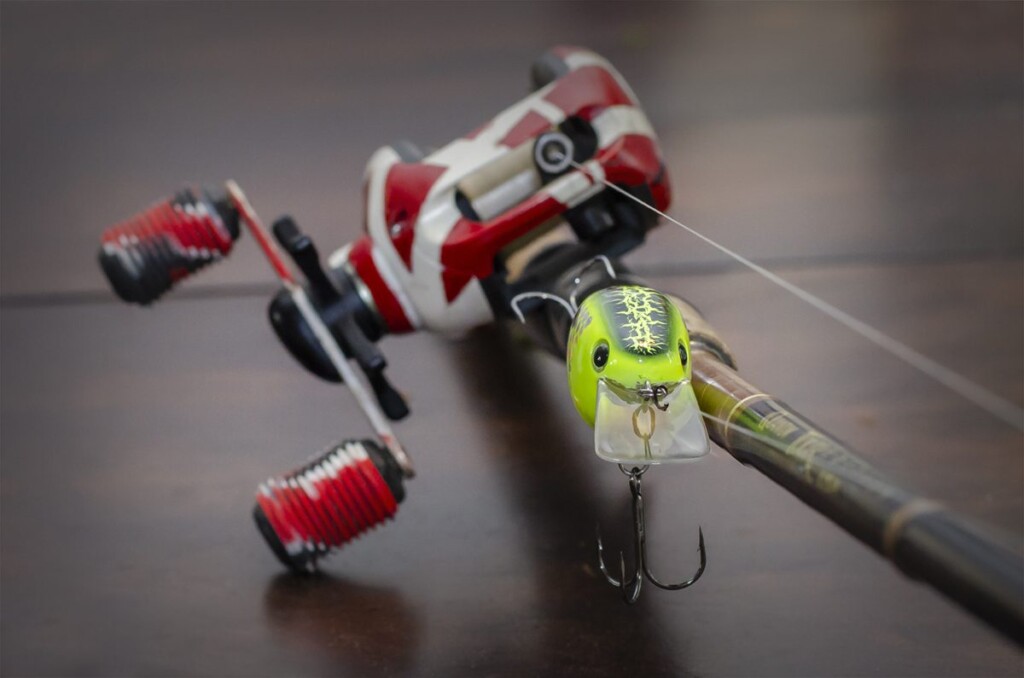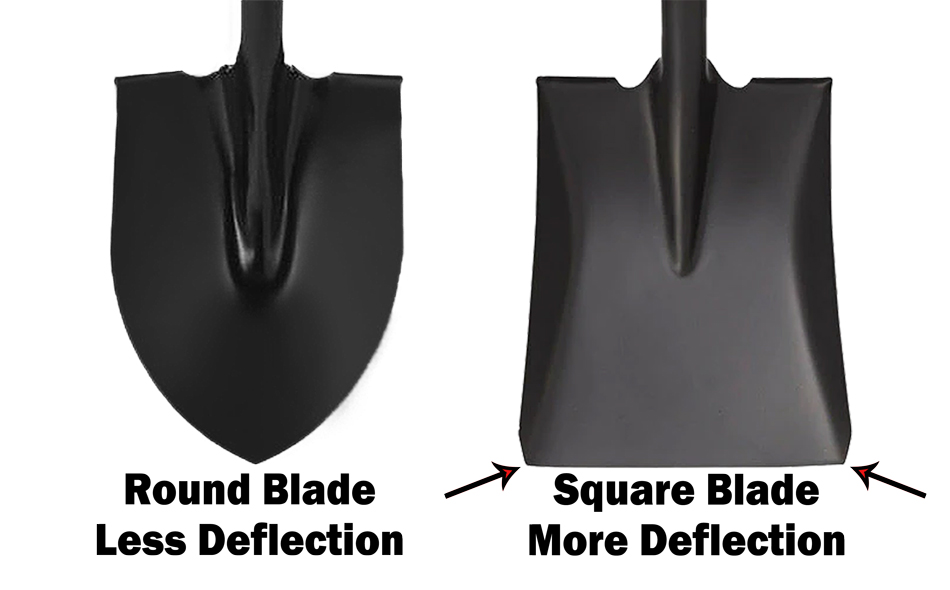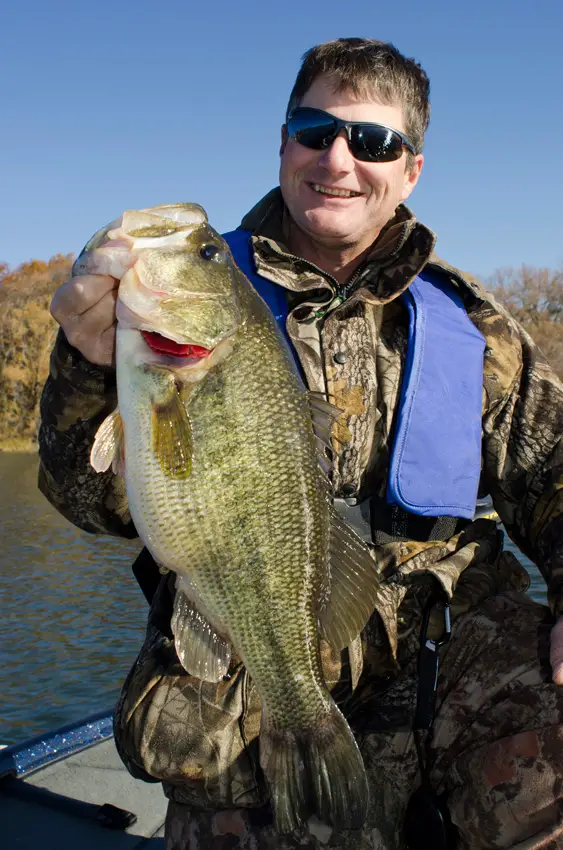Do you find it odd that certain lures or baits are associated “geographically” by anglers?
I know I do it, or at least used to.
One lure type that I always assumed only worked on “American” Bass was crankbaits. For some god-forsaken reason, I couldn’t get it in my head that a lure is a lure, and a fish is a fish. I’d caught Walleye and Pike on crankbaits so I knew some fish would eat them. So then, as for Bass, if they work in the south, then why wouldn’t they work in the north? I finally sucked up my naive attitude and started using Cranks for Bass – and thank god I did!
Pretty much everyone now knows what a Bass shaped crankbait looks like. It’s kind of fishy shaped and occasionally crawfish shaped.
I say kind of because they truly do not have to be perfect since they are a reaction type of bait. A Bass either commits or swims away. Simple process.

WHY THE SQUAREBILL?
The bill or lip of a crankbait is what makes the bait dive and wiggle. It is an essential component to make the bait perform and to entice fish to bite. The shape of the bill becomes a huge factor towards performance and enticement.
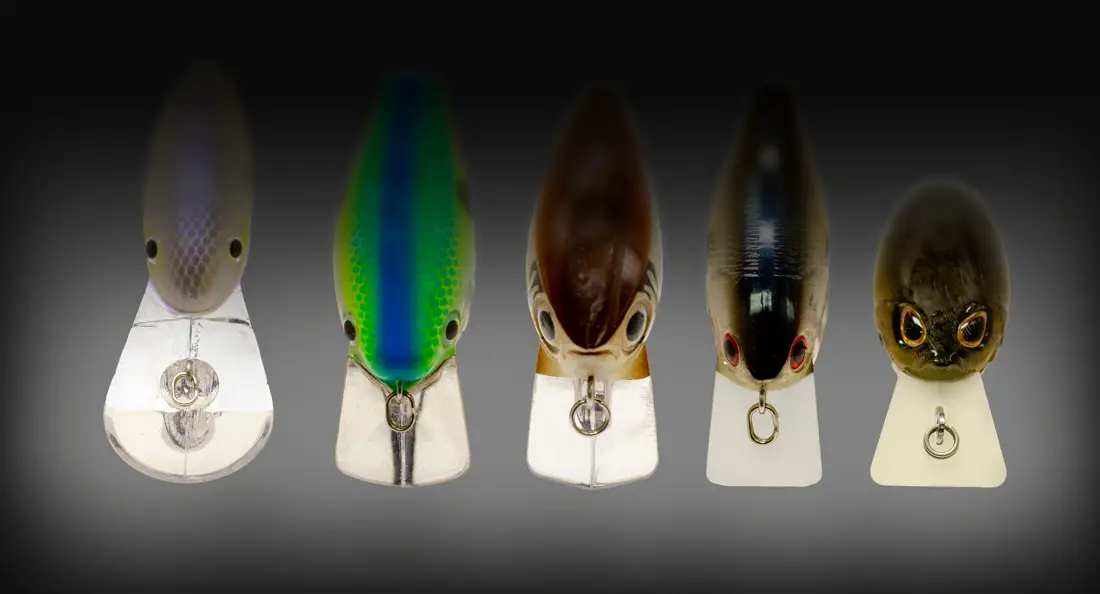
The left crankbait has what is classed as a “normal” lip or bill. The remaining are derivatives of a square-shaped bill.
In a squarebill, the squared-off corners of the bottom of the bill are the key to this bait’s effectiveness. Not only does it give the bait a distinct wobble as compared to rounded-off bills, but it gives the bait the ability to deflect off structure and cover much more aggressively and effectively than a rounded-off bill. Picture in your mind a square shovel digging and then one of the two “squared-off” edges deflecting off a rock vs. a rounded shovel hitting the exact same object. A huge difference.
CRASH AND BANG THAT SQUAREBILL
The whole idea of the square-shaped bill is to radically deflect off of rocks, wood, etc.
Does this mean that unless you are crashing and banging your crankbait, all other situations will be rendered useless?
Absolutely not!
As a matter of fact, I’ve caught many quality Canadian Largemouth on a squarebill crank that was simply reeled in. ZERO contact with structure or cover. Yes, if you can jam that bill into something then go for it, but a squarebill crankbait is still effective without deflecting.
In the world of Smallmouth fishing, however, where hard structure such as boulders and logs are frequent hideouts for big, lurking fish, deflecting your bait becomes key. Not only will this create noise to draw fish in, but it will also get you directly into the tight and snaggy areas that these fish so frequently call home here in the north.The log pictured below is an excellent example of a Canadian Smallmouth magnet. The left, deep side of this log is a perfect area to run a squarebill over!
WHEN IS A SQUAREBILL MOST EFFECTIVE ON BASS?
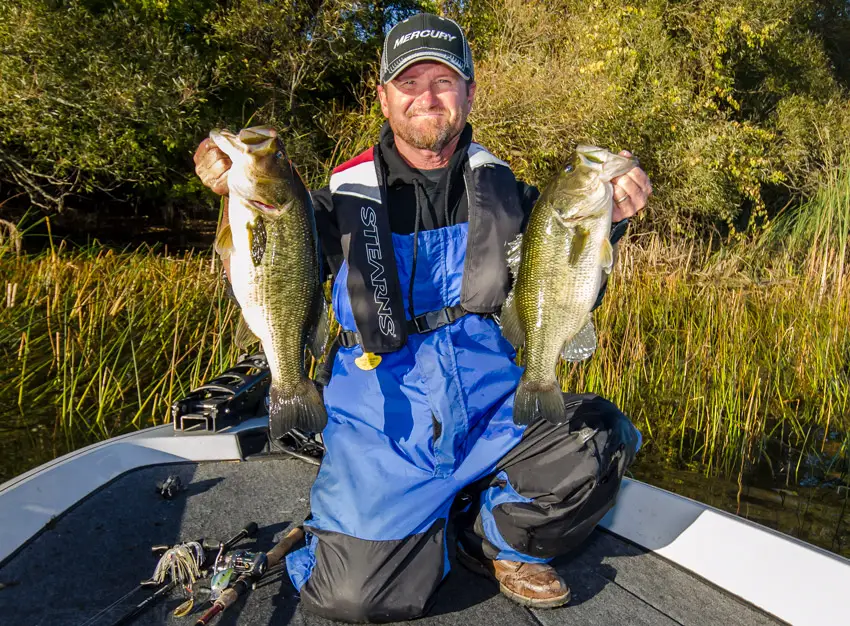
Here is a pair of beauty Largemouth I caught cranking (take a look at the two baits I have tied on, a squarebill and a spinnerbait) in early October of 2017.
This is an easy question to answer, but in my experience, it does come in two parts.
First, you can’t go wrong with a squarebill crankbait most of the time during the open Canadian Bass season. I’ve seen them perform well from opening day and into mid-fall (when most people stop fishing bass) on both Largemouth and Smallmouth.
The second part (answer) is in the early Canadian autumn period, Squarebills are one of my favourite lures to throw. Especially the larger versions (2.5 size usually). However, once the late-season water temperatures drop into the mid to low 40-degree Fahrenheit range, for me, things seem to slow down (but I’m sure they would still work).
Once the waters touch the lowest 40’s mark and into the high 30’, well that’s another article.
TWO ABSOLUTE CRANK PIGS
Just to show you how effective squarebills are from early summer to mid-fall, here are a couple of fish stories about two absolute giant Canadian Largemouth.
The first one came on opening day (the 4th Saturday of June) in central Ontario. My buddy Sean Gleeson, his son Ben, and I were fishing together. Sean and I were using the usual Jig & Pigs, soft stick worms, spinnerbaits, etc,but only Ben was using a squarebill. It wasn’t long into the morning when Ben fired out a bomb of a cast and a fish instantly rolled on his bait. That monster weighed in at over 6lbs. It blew our minds.

Ben Gleeson with a gigantic opening-day Canadian Largemouth that he caught on a 2.5 sized squarebill crankbait.The second trip had my long-time fishing bud Mike Burriss, his friend Steve Hughes, and I fishing in early November on the Bay of Quinte in frigid water temps. Although we didn’t clock the fish in numbers that day, every fish we caught was a nice one, including Mike’s biggest Largemouth ever, a 6+pounder! Mikey caught that beast on a squarebill crankbait.
WHEN SIZE “DOES” MATTER
There is so much talk in the squarebill world as to 1.5 and 2.5 in relation to size. For the longest time, I just figured it was the length of the baits (never did check). But I was wrong. Similar to hook sizes, these numbers are used more for reference than any actual measurement and, in the world of crankbaits anyways, the larger the number; the larger the bait.
Confused why they don’t just use the actual size of the bait? Me too. I will say though, that I use the 1.5 size either early in the season, when the newest of the year’s baitfish are at their smallest, or during a bad weather period where downsizing is a good idea.
As summer goes on and into the early fall, a 2.5 is pretty much standard for me.
As a reference, in the Strike King KVD line, a 1.5 is 3” long, comes with #4 hooks and dives to around 4’ deep. The 2.5 is 3.25” long, comes with #2 hooks and as well, dives to around 4’ deep.
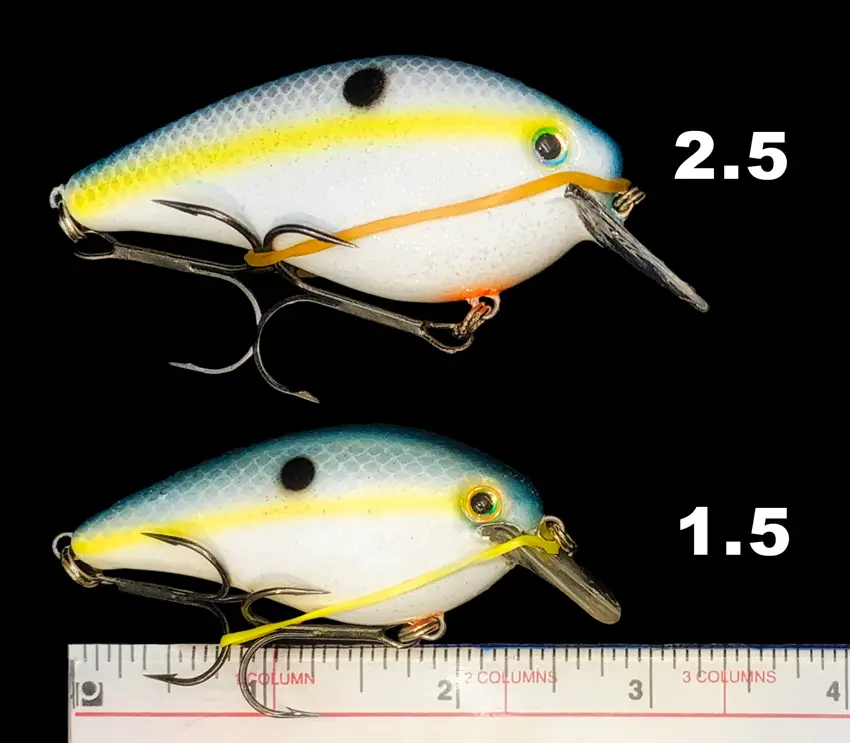
Now if you want to go to the extreme in the squarebill world then the KVD 8.0 Magnum Squarebill is 4-1/2″ long, 1-1/8oz in weight, and dives from 3-7ft. That may not seem impressive on paper but once you set your peepers on this baby… well I say, “Pike Slayer”!
WEEDS + CRANKS = AWESOME
Weedbeds, clumps, strands, etc, are fantastic for many species of fish. Look for weeds and you will often find your quarry. Now, just because most crankbaits consist of two treble hooks, anglers often refrain from using them in and around weeds. Agreed it can be a pain and often is impossible, however, in sparse, “workable” weeds, squarebills can be excellent. I look at them as an in-between bait, sandwiched under a topwater retrieve and over a jig. I honestly believe that the distinct squarebill wobble, while tracking through sparse weeds, has a lot to do with bass hitting this bait.
RODS AND REELS AND MORE FOR SQUAREBILLS
This one, in my opinion, is extremely critical. Let’s start with the reel. My preference is a baitcaster. I love the direct drive of line onto the spool on a steady to steady-ish retrieve. My preference is a 6:1 gear ratio. I’d rather speed up my retrieve if necessary, than slow down an 8:1 ratio. Trust me, I’ve tried them both, and the feel of a slower baitcasting reel, crawling a squarebill in and around cover, is a nice feel.
I have a mutant of a reel (see feature image) that I designed after Eddie Van Halen’s “Franken Strat’. I call my monstrosity “Crankenstein” It’s old, it’s noisy, I only use it with crankbaits, I have no idea as to the exact gear ratio (it’s not high speed for sure), and it plain catches em’!
My squarebill rod is another beast in my arsenal. It’s a Tour Edition that I’ll bet is at least 20-25 years old. To tell the truth, I’m not even sure if it’s graphite, glass, or a composite, and I don’t care. I recently had it customized to suit me better. I loved the soft, parabolic action of this 7’, medium/heavy rod (essential for all crankbait fishing), but the handle was way too short for 2-handing a bomb cast with a squarebill. A rod builder rebuilt the handle to almost twice the length. Now it’s one of my favourite rods that I own. It’s a bit heavy for lighter baits but it’s great for anything with a bit of weight.
As for line, I use fluorocarbon for this type of presentation, I really like its forgiveness. Braid just doesn’t have enough stretch and Mono has way too much. I’ll range from 10 to 15lb test, with my favorite being 12lb.
Most cranks now come with quality treble hooks. Be sure of this. Many baits, even some expensive ones, can come with cheap hooks that can break and bend on impact from larger fish. It is always a good idea to test the strength of the hooks, either with your fingers or a pair of pliers, before a fish does it for you! If you must change them out, triple grips are a great design.
SAFETY PLEASE
“A Hook In Hand Is NOT Worth Two In A Bass”… depending on how big that bass is of course. Most modern-day crankbaits, squarebills included, come from the factory with needle-sharp hooks. That means caution must be taken when firing these little projectiles in every which direction.
Trust me when I say, no-one is immune to a flying hook smacking you with deep penetration.
NOT JUST FOR BASS
Squarebills, and all other crankbaits, are great for other species of fish as well. While fishing with cranks for Bass, I’ve had many incidental catches of Walleye, Northern Pike, Muskie, and even coarse fish like Sheephead (Freshwater Drum). Let’s face it, a crankbait looks like a small fish and an easy meal.
Although I do not normally use squarebills for Walleye, I do target these iconic Canadian fish with crankbaits and find it one of the craziest and most fun Walleye bites I’ve ever experienced.
SOME SQUARE-CRANKIN’ TIPS
Here are a few things I’ve discovered while cranking that I hope will help you out.
- Long bomb casts are great to cover water, but the further you cast a squarebill, the less hook-setting penetration you’ll get with fluorocarbon line and a “softish” action rod.
- Set the hook hard. With a long cast (like I said above), a soft action rod, and line stretch, getting those hooks to penetrate much tougher than a jig on braid with a heavy action stick.
- For me, the fluorocarbon line is the perfect crankbait line.
- I always use a snap (no swivel). Bigger baits can handle bigger snaps. In my opinion, it doesn’t hurt the action of the bait whatsoever (it actually may help) and it makes swapping out baits quicker and easier.
- If you are fishing in shallow water or with lots of obstructions, work your squarebill almost like a topwater bait or wake bait. VERY SLOW AND METHODICAL
- I prefer baitcasting, but spinning will work.
- Drive your baits into obstructions but do not neglect relatively open water.
- Colder water =smaller baits;warmer water =larger baits.
- Early fall rocks!!!!
- I find a squarebill is one of the easiest bass baits to use.
CANADIANS: USE YOUR CRANKBAITS!
It took a while to penetrate the cement in my stubborn head, but nowI see clearly. Crankbaits are a wonderful fishing lure, not only for our southern neighboursbut for our Canadian fish as well.
If you’re not throwing crankbaits of all shapes and sizes, then you need to get on it for this upcoming season.
If you’re a round-bill cranker, then you need to square up and get on the squarebill bandwagon. They can be deadly and truly are, fun to use.
I now see the light…
Best of luck crankin’




